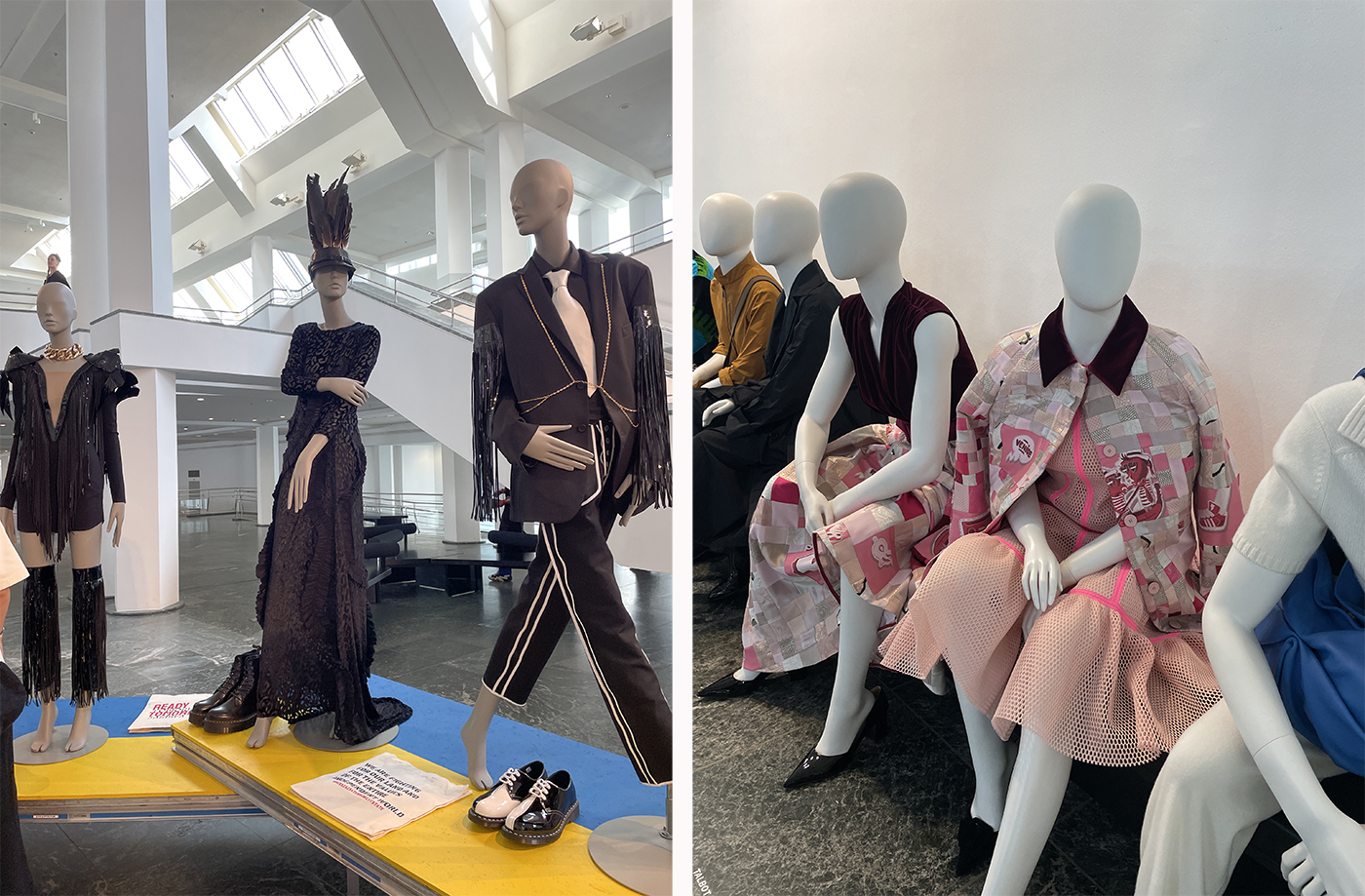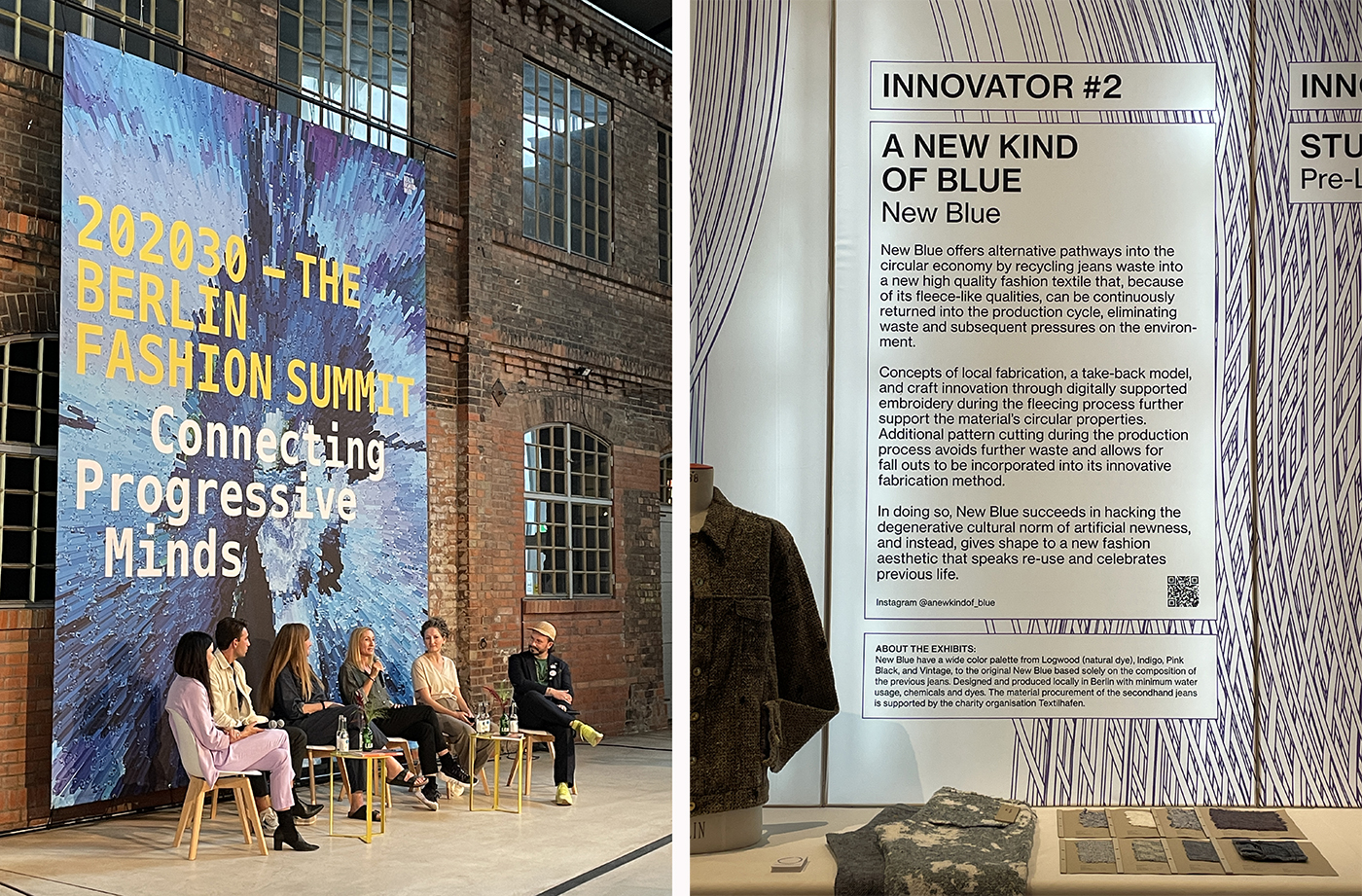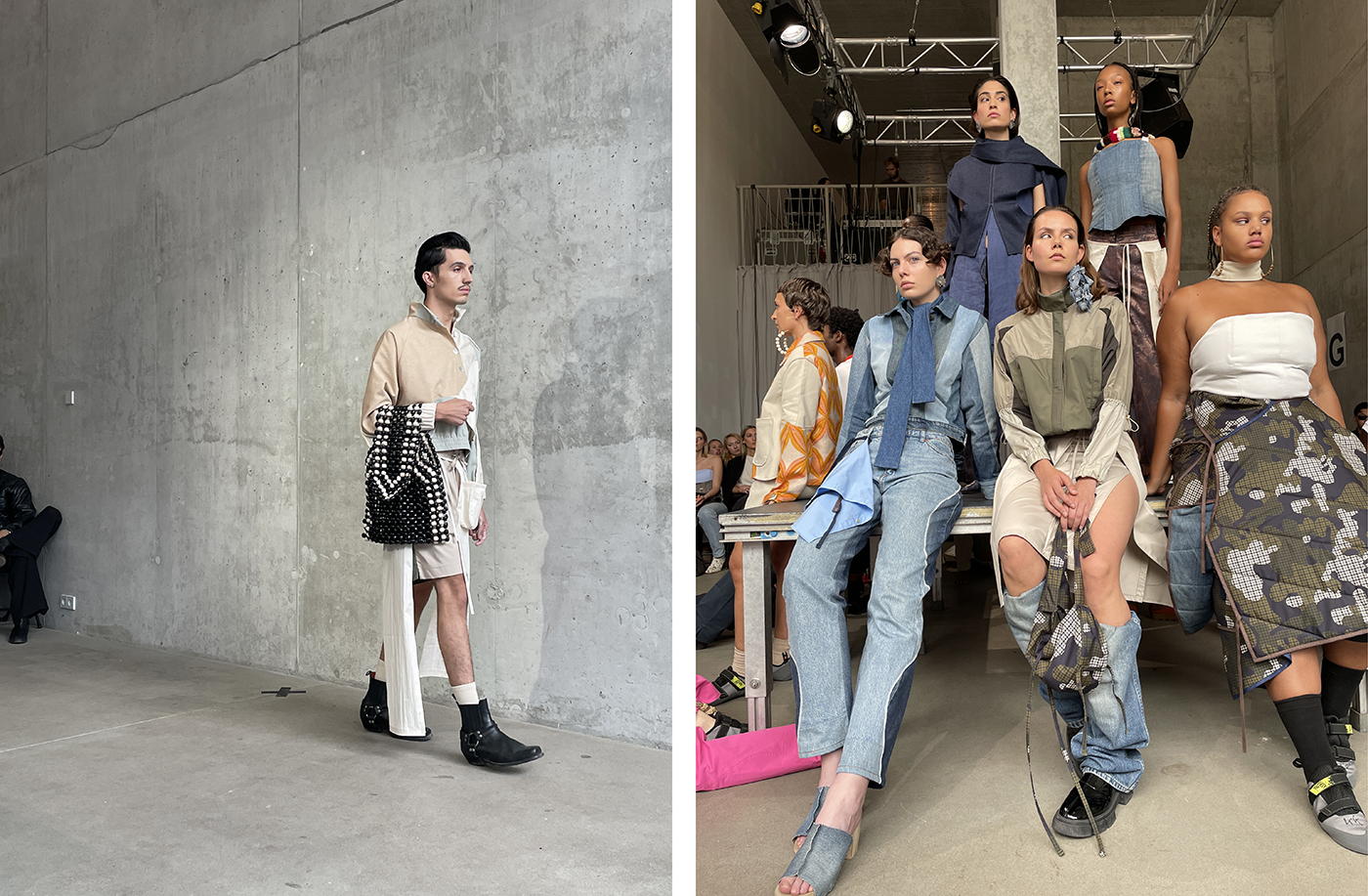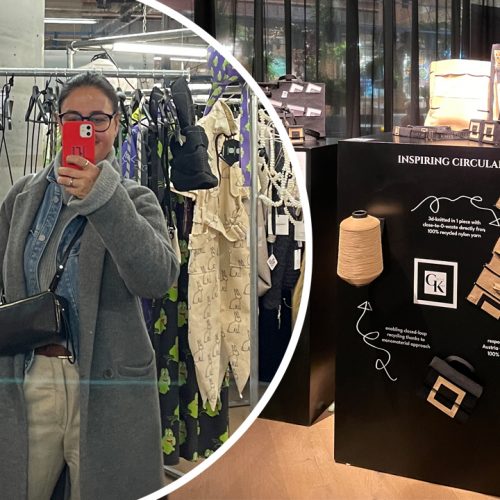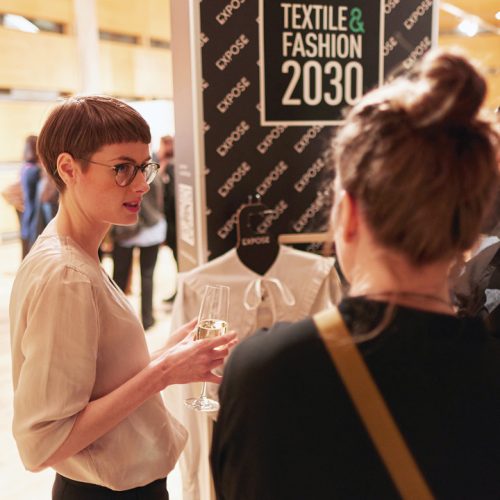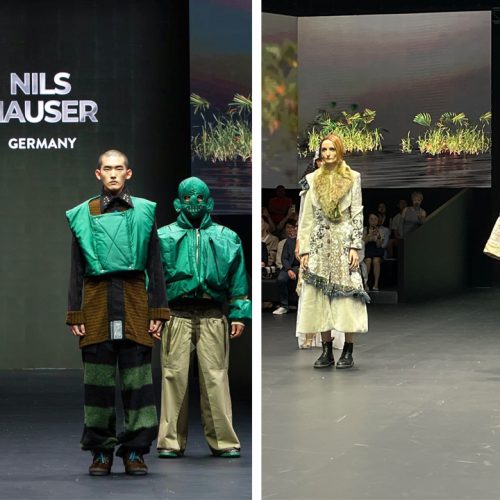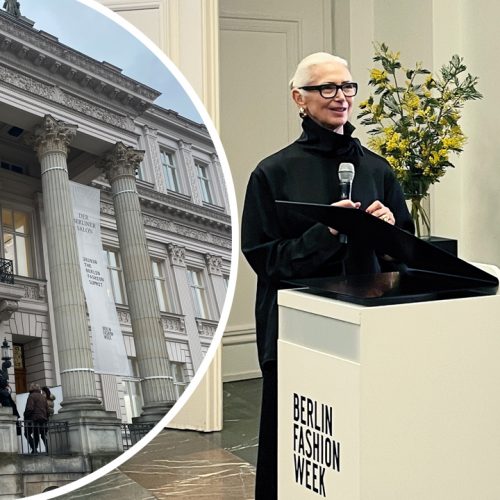While the entire fashion crowd has been looking to London, Milan, Paris & Co. for the last few weeks, I am actively looking back at the fashion week in Berlin. Honestly? Why do we always look into the distance? We also have a fashion week. A fashion week. Or whatever you like to call it. The name is just rubbish. What it is about is – yes, exactly – fashion. Fashion from Germany, our homeland. And we’ve neglected them for long enough.
At the beginning of September was Fashion Week in Berlin. Made up of Mercedes-Benz activities (MBFW Berlin) (eight shows, panel talks and the exhibition for the capsule collection ‘ACC01’ in the Hotel Telegraphenamt) and various events and fashion concepts spread across the city. Berlin was more fashionable than it had been for a long time. What is possible when the city (read: Berlin Senate) has understood the potential of fashion. The fashion industry is not only one of the biggest polluters. Fashion is also a big economic driver and – hello, climate crisis – if done right, fashion can be an innovative game changer.
Why is fashion “Made in Germany” so difficult in your own country?
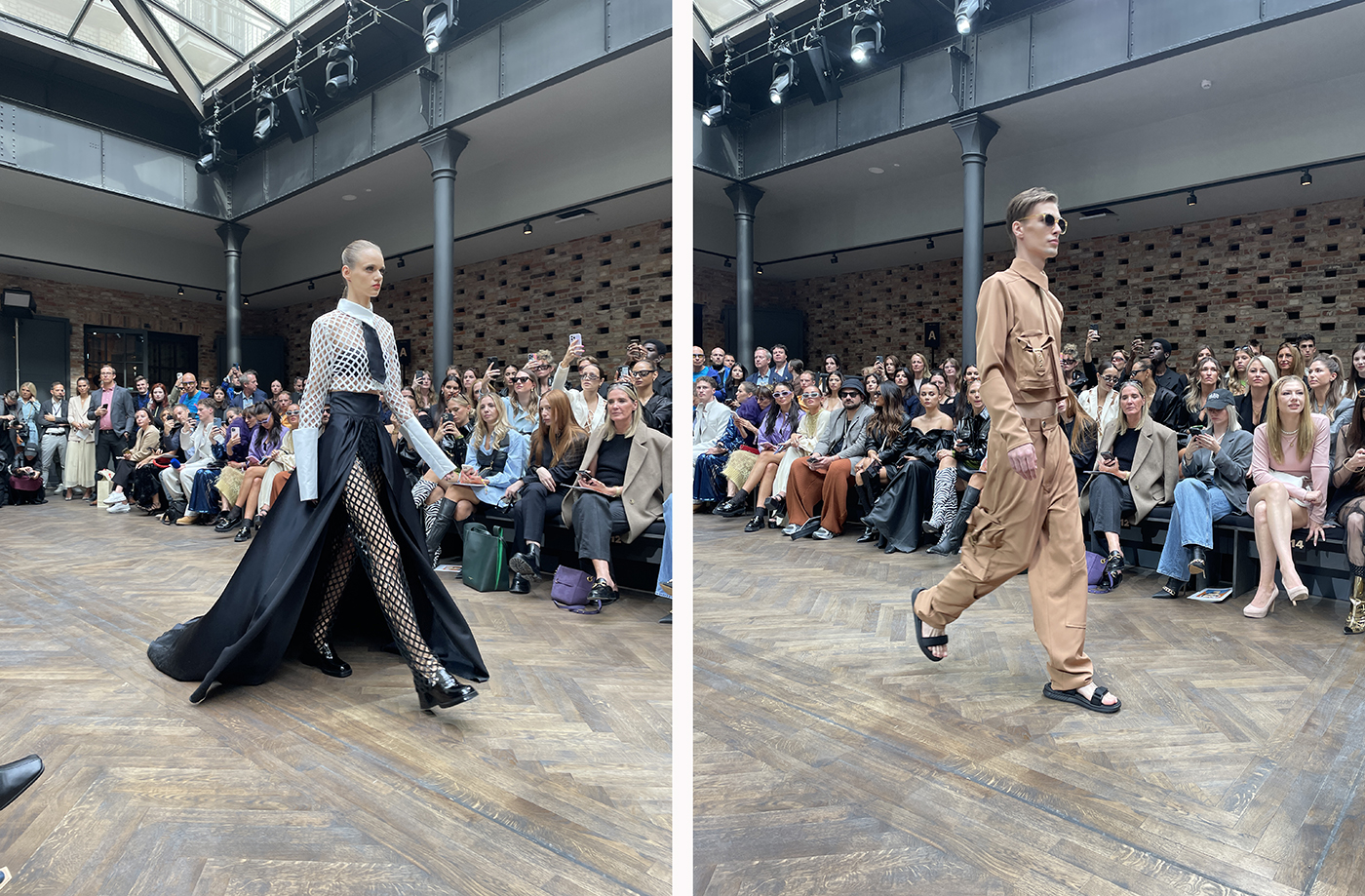
But: German designers like to take their collections to one of the fashion metropolises mentioned above and try to achieve fame and (fashion) honor there. This is easier to do in a city where fashion has a certain value. Where fashion is valued. Designers in Germany don’t have it easy. That needs to change. And that’s about to change.
With a bit of luck, one or the other will still return home (thank you, Kilian Kerner, for supporting Berlin).
What German fashion has been missing for a long time: a lobby. Enthusiastic media. Support. Fashion and its makers need more visibility. The Fashion Council Germany (representing the interests of German fashion) has been taking care of this with increasing success for several years. This was long overdue and more than urgent. Because German fashion, at least the ones you know from the heyday like Escada, Strenesse, Rene Lezard, Rena Lange (to name just a few) have disappeared from the scene. Because? Because we always look somewhere else. To the Guccis, Pradas and Dolce & Gabbanas of this world. Doesn’t matter. Everywhere. Just not in your own country. We need consumers who buy local brands.
Why does German fashion (did) have such a low status? Because it’s good manners to make them look bad.
Just like the fashion week in Berlin for a long time: After every event, the same comments: Who knows the designers who are showing in Berlin? There is no international press in Berlin… Hello?! That’s so typical. Instead of celebrating the incredible creativity, the will to change, the new fashion generation, innovative concepts, the new approaches that (among other things!) are emerging in Berlin and writing them out into the world, there is always (with the exception of most Berlin media) a hair in the soup found. Comparisons are made where no comparisons are needed. London isn’t Milan either. And Paris is not Copenhagen.
What is the role of Berlin in the international fashion circus. Its own. Berlin is not Milan. Nor should it be. Berlin is Berlin. Basta.
But Berlin has incredible potential. Thanks to the support of the Berlin Senate. And through the Fashion Council Germany (Discover now and become a member >>>), which supports German fashion with visibility, funding programs (Studio2Retail!!!) and exciting concepts and wants to make Berlin a fashion city again.
The only drawback: it would be very nice if this commitment from the public sector could also work in other parts of Germany.
(Not only) in our capital there are incredibly exciting (sustainable!) designers, labels, projects and organizations at the start. And they’re getting more and more stage presence. Hence my request: It is high time to celebrate German fashion. It’s time for good news!
My top 3 highlights from Berlin Fashion Week (and there could be more).
Especially for me this time – after 20 years in the fashion industry – I had my 16-year-old daughters Leni and Pauli with me for the first time, who are very interested in fashion and who support me more and more. We have seen shows, performances, exhibitions, conferences and installations. And we saw that Berlin is motivated. Motivated to also integrate “real” people into the fashion week. And so one or the other door has opened for the public, which should also buy fashion.
The Berliner Salon
Curated by the former VOGUE editor-in-chief Christiane Arp, 30 participants were allowed to present their designs as part of this format. The format, which was originally at home in Berlin’s Kronprinzenpalais and has now found its home in Berlin’s Kulturforum via various stations, provides an exciting insight into the status quo of German fashion. Evergreens such as Odeeh and Antonia Zander exhibit here as well as newcomers: e.g. the Berlin upcycling label Avenir, OFFT…
202030 Berlin Fashion Summit
Finally real again! The fourth edition of the sustainability conference attracted almost 2,000 visitors to the Colosseum Theater in Prenzlauer Berg. For two days, over 60 speakers from all over the world shared their expertise on the topic of “Fashion for Positive Impact: Regenerative Transformation”. Among them Cradle to Cradle founder Prof. Dr. Michael Braungart, Dr. Rüdiger Fox (Sympatex – you can find a big interview in our PUREVIU magazine.) and Marte Hentschel (Sqetch). To be discovered in parallel: three exhibitions. The innovation exhibition All Good(s), the Esthetica: What lies ahead with a focus on progressive upcycling designers and a presentation of the results of the Pop Up Think Tank.
Avenir Show Performance
And here at the latest it becomes clear what clever funding concepts make possible: The upcycling brand Avenir Berlin is one of the winners of the Studio2Retail concept funding format awarded by the Berlin Senate for Economics, Energy and Business and implemented by the Fashion Council Germany. The young brand was able to present its fashion (with a message!) as part of a show performance in Berlin’s Lobe Block.
For all other highlights: I reported live on @mygreenstylecom…



